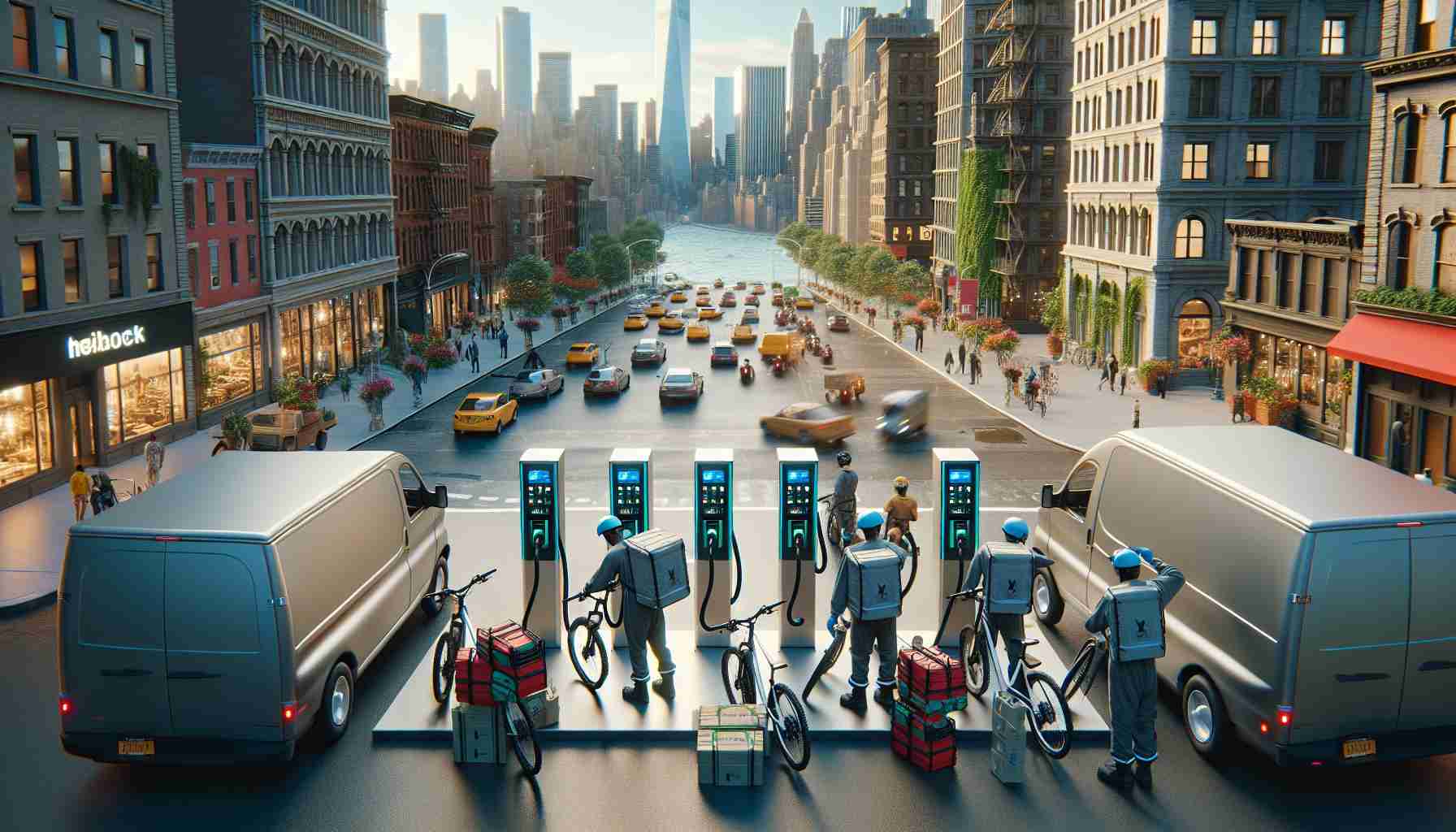A revolutionary initiative in New York City has transformed the way delivery workers charge their e-bikes, significantly improving safety and efficiency in the bustling metropolis. Instead of recharging at home or lugging around heavy spare batteries, workers now have access to convenient charging hubs strategically located across the city.
The program not only reduces the need for at-home charging but also minimizes the use of spare batteries, resulting in a cleaner and more sustainable future for all New Yorkers. These charging stations have proven to be a game-changer for the more than 60,000 delivery workers who navigate the city streets daily.
With charging stations deployed at various locations in Manhattan and Brooklyn, delivery workers can now easily swap empty batteries for fully charged ones, thanks to companies like Popwheels and Swobbee. This innovative approach not only enhances worker safety but also promotes the use of eco-friendly transportation alternatives.
The success of the program has paved the way for further expansion, with plans to introduce more charging hubs near public housing complexes. This forward-thinking initiative is not just about ensuring a sustainable future but also about creating a safer and more efficient environment for all residents of the city.
As the program continues to evolve, it is clear that these advancements in e-bike technology are reshaping the landscape of urban transportation in New York City. The implementation of these charging stations heralds a new era of sustainable and safe delivery services, setting a precedent for cities worldwide to follow suit.
Expanding the Scope: Unveiling New Aspects of the E-bike Charging Program for Delivery Workers in NYC
New York City’s e-bike charging program has undeniably revolutionized the delivery industry, bolstering safety and efficiency in the city. However, as this initiative gains momentum, new questions and challenges come to light that are crucial to address for its continued success.
Key Questions:
1. How is the charging infrastructure being funded and sustained in the long term?
2. What measures are in place to ensure equitable access to charging hubs for all delivery workers?
3. How do these charging stations impact the overall electricity consumption and grid capacity of the city?
Answers and Insights:
– The funding for the charging infrastructure primarily comes from a mix of private investments from companies like Popwheels and Swobbee, alongside potential city subsidies or incentives aimed at promoting sustainable transportation.
– To ensure equitable access, a transparent scheduling system or reservation platform could be implemented, preventing monopolization of charging stations by certain delivery services.
– Monitoring and optimizing energy consumption at these hubs are essential to prevent strain on the electricity grid, emphasizing the need for smart charging solutions and potentially incorporating renewable energy sources.
Key Challenges and Controversies:
1. Infrastructure Strain: How will the increased demand for charging stations affect the existing city infrastructure?
2. Data Security Concerns: What measures are in place to safeguard personal and operational data collected at these charging hubs?
3. Regulatory Hurdles: Are there potential conflicts with existing regulations or zoning laws regarding the establishment of these hubs?
Advantages and Disadvantages:
– Advantages: Enhanced worker safety, reduced environmental impact, increased operational efficiency, and potential cost savings for delivery workers.
– Disadvantages: Potential strain on city resources, challenges in maintaining and expanding infrastructure, and concerns regarding data privacy and cybersecurity risks associated with smart charging systems.
As the program continues to expand, addressing these critical questions and challenges will be pivotal in ensuring its sustainability and positive impact on the city’s transportation landscape.
For further insights into sustainable urban transportation initiatives like the e-bike charging program in New York City, you can explore the Official NYC Government Website.

















